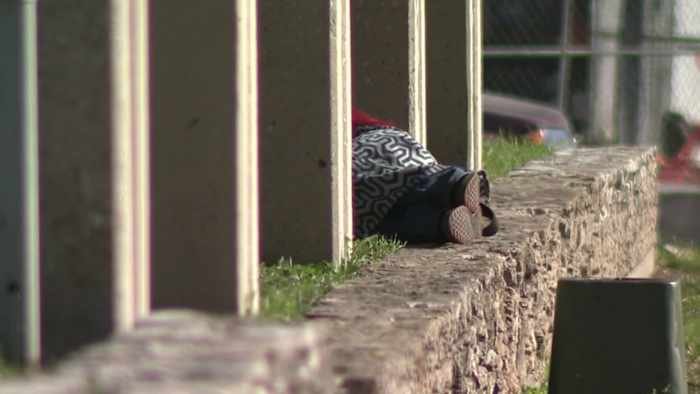BEXAR COUNTY, Texas – The latest Point-in-Time count, conducted by the nonprofit organization Close to Home, found 3,625 people experiencing homelessness in Bexar County.
The count revealed that nearly 69% of those experiencing homelessness are living in shelters, while the remaining 31% live unsheltered on the streets.
“The cost of housing in our community has continued to rise but the median household income has not,” said Terri Behling, a spokesperson at Haven for Hope. “It could happen to any one of us at any time. … If you do not have emergency savings or a landlord that won’t work with you.”
County data also shows that one in five Bexar County children live in poverty.
Among unsheltered people surveyed, 13% reported a history of foster care placement. Of those, 41.4% lacked stable housing after aging out of the system.
Demographics of people experiencing homelessness in Bexar County
Among the 446 unsheltered people counted, 310 people were 35 years old or older. The largest single age category was 35- to 44-year-olds with 132 people.
Only 74 people were under 35, mostly between 25 and 34 years old.
People who identify as Hispanic and Latino made up the largest racial group among those surveyed, accounting for 290 individuals.
Those who identify as Black, African American and/or African were notably overrepresented at 17.8%, more than double their 7.6% share of the overall county population.
Results showed only 4.3% of those surveyed, or 19 people, were veterans.
Health conditions and medical care
Close to Home executive director Katie Wilson said the organization saw a reduction in chronic homelessness, or people who have a disabling condition and have been on the street for longer than a year.
Wilson said there was also a reduction in veterans experiencing homelessness.
Nearly half, 209 people, reported experiencing homelessness for the first time, with many having recently lost stable housing. Of the group, 98 people had been renting or owning their previous home.
Meanwhile, 87 people met the criteria for chronic homelessness, characterized by long-term and repeated episodes paired with disabling conditions.
Nearly 30% of people experiencing homelessness identified as survivors of domestic violence, dating violence, sexual assault or stalking. Of those, 23 people were actively fleeing violent situations and 63 said domestic violence directly contributed to their homelessness.
Despite many rating their health as “excellent,” 220 people acknowledged current alcohol or substance use, and 51.1% of people surveyed reported mental health conditions.
Physical disabilities affected 35.2% of people surveyed, and 5.6% relied on medical equipment such as wheelchairs or oxygen concentrators. About 2% reported living with AIDS or an HIV-related illness.
Almost half of people surveyed lacked health insurance, pointing to significant healthcare access gaps.
Access to resources
When asked about resources needed to achieve stable housing, 49.3% surveyed cited help recovering identification documents, 39.9% needed shelter, 35.9% supportive housing or vouchers and 30.3% employment opportunities.
For those experiencing homelessness for the first time, ID recovery and shelter were tied as the most pressing needs.
“Homelessness is solvable,” Wilson said. “We just need to scale up our solutions that are already working and connect it back to housing.”
Close to Home and partners urge funders and policymakers to:
-
Fully fund homeless response systems amid declining donations and federal resources
-
Expand homelessness prevention efforts
-
Promote collaboration across sectors
-
Challenge stereotypes around homelessness
-
Support affordable housing bonds and zoning reforms
-
Prioritize long-term, evidence-based solutions like supportive housing
-
Increase access to healthcare and behavioral health services
-
Invest in diversion and eviction prevention
“If our employment opportunities do not keep pace with the cost of living, we could see an increase in those experiencing homelessness,” Behling said.
She remains hopeful though.
“We’re seeing more people coming into shelters getting access to the resources they need to then transition into permanent housing,” Behling said.
Read also:
Copyright 2025 by TheTXLoop – All rights reserved.
